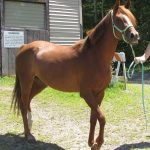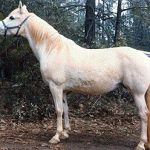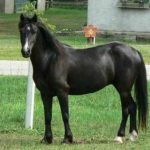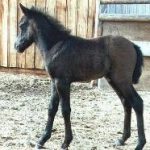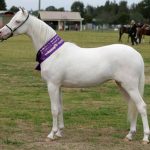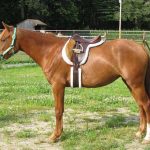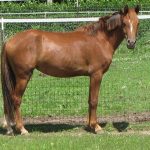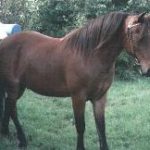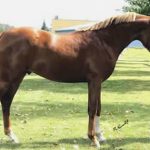Welara Pony
The Welara is a part-Arabian breed of pony, owing its origination to the Welsh pony as well as the Arabian horse. This newly developed equine breed is gradually gaining popularity in a variety of disciplines including show jumping and pleasure riding since they possess an energetic, hardy nature as well as a gentle and generous disposition.
Welara Pony Pictures
- Images of Welara Pony
- Pictures of Welara Pony
- Welara Ponies
- Welara Pony Foal
- Welara Pony Horse
- Welara Pony Images
- Welara Pony Mare
- Welara Pony Photos
- Welara Pony Stallion
- Welara Pony
Quick Information
| Temperament/ Personality | Intelligent, friendly, kind, versatile and generous |
| Physical Characteristics | Small and concave head; arched neck; long croup and shoulders; and a short back |
| Colors | All colors including white, dun, chestnut, gray, black, buckskin, and bay, though the spotted pattern is not accepted |
| Common Use | General riding, pleasure riding, show jumping, three-day eventing, as well as used for riders who are taking part in the jumper and hunter classes |
| Height | 11. to 15 hands on an average |
| Weight | Unknown |
| Health | No known breed-related health issues |
| Popular Traits | Beautiful, hardy, and graceful movements |
| Feeding/ Diet | Hay and grain |
| Country of Origin | Originally developed in England but registered in the United States of America |
| Year of development | In the first half of the 20th century |
| Ancestors | Arabian horse and Welsh Pony |
Welara Sport Pony Video
History
The breeding of the Welara Pony occurred in England during the beginning part of the 20th century. The initiatives of developing these ponies were taken by Lady Wentworth, belonging to Sussex, England for the purpose of creating a breed that would be refined, beautiful and hardy just like its parents. She crossed Skowronek, her stallion of Polish origin as well as other Arabian stallions with the Welsh mares belonging to the Coed Coch stud farm of North Wales that had been imported by her during the early part of 1920s.In fact, she admired the ponies that were a result of the cross so much that she even claimed to be the most beautiful of all things. Other breeders located in North America and England also took inspiration from this move of Wentworth and the breed’s registry was developed in the year 1981 in the United States by the name American Welara Pony Registry for the purpose of promoting and developing this breed.
The registry gradually gained immense popularity over a span of about twenty years also being acclaimed internationally in several other countries such as Canada, Hawaii, Newzealand, Jamaica, Germany and Australia. Besides the development of the registry, a stud book bearing the breed criteria was also published, with the pedigree of these horses being collected as well as preserved.
Purebred Welaras should be an outcome of crossing only the Arabian and Welsh breed and those that were registered were to bear 1/8 to 7/8 proportion of blood of their foundation breeds. There were a little more than 1500 ponies that attained registration in North America according to the 2005 records, while about 100 new foals have been registered on a yearly basis.
The Welara Sport Ponies are also eligible for registration that may have ponies which are about 50% Welara but also contain blood of other equine breeds, mostly the Thoroughbreds. They may however be of any size and color, with the restrictions imposed on the purebred Welara not being applicable for them.
In fact in Europe the crosses of the Welsh and Arabian along with some amount of Thoroughbred blood infused are referred to as riding or sports ponies. While in the United States these ponies are majorly found in the Western and Central regions.
Breed characteristics
The Arabian horse can be crossed with any of the four sections of the Welsh pony (A, B, C, D), with the resultant ponies being a little different in certain aspects.
Section A Welsh Pony: These ponies being the smallest are below 13 hands, mainly used for light riding as well as mounts for kids.
Section B Welsh Pony: They have a size in between 13 and 13.2 hands, used as mounts for older children and adults of a small-stature.
Section C Welsh Pony: They are much heavier in comparison to the previous ones, being 13.2 to 14.2 hands in size, also having a feathered foot at times.
Section D Welsh Pony: Size is between 13.3 and 15 hands and they are often used as mounts for a variety of major disciplines just like the ones in Section C.


